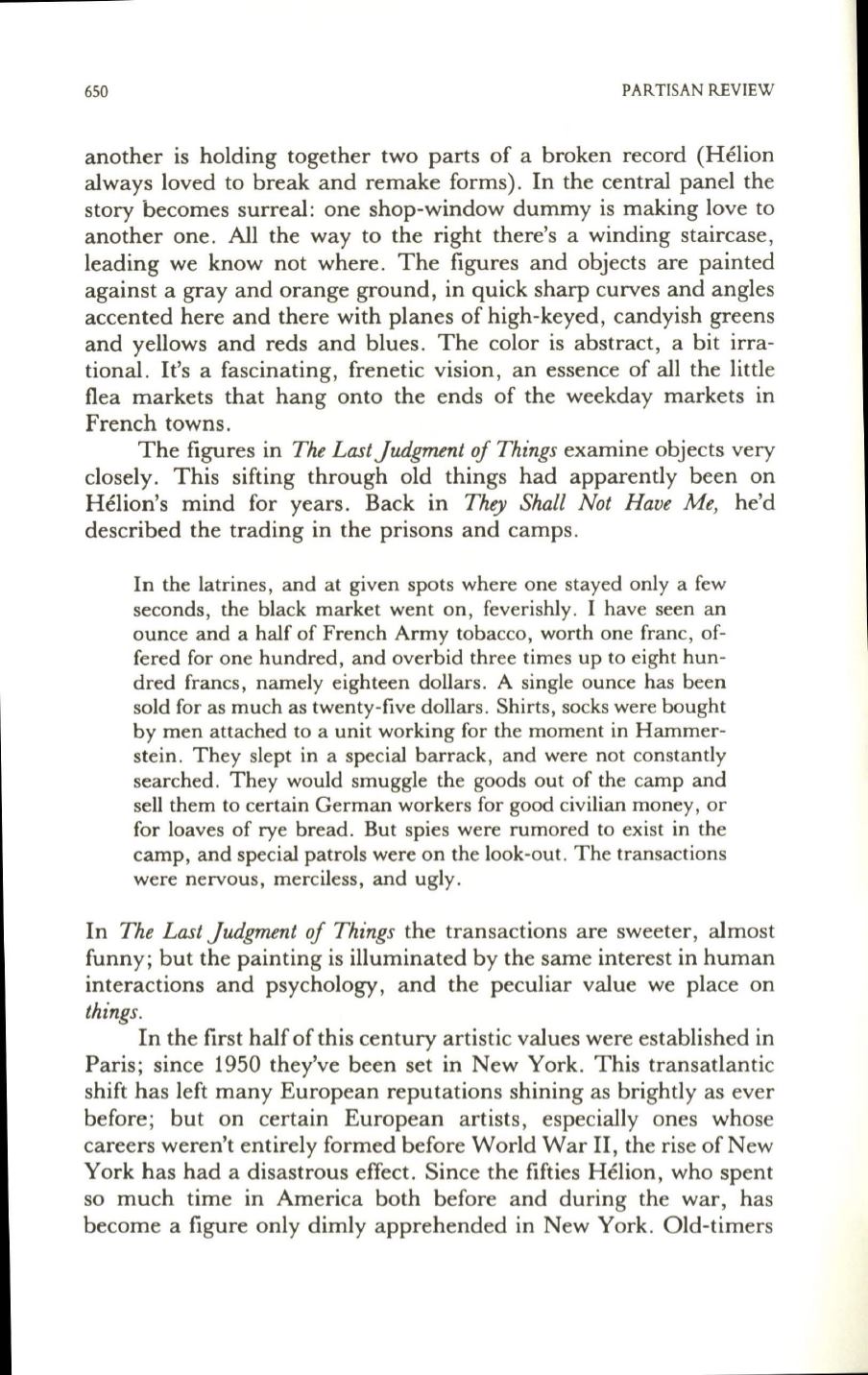
650
PARTISAN REVIEW
another is holding together two parts of a broken record (Helion
always loved to break and remake forms) . In the central panel the
story becomes surreal: one shop-window dummy is making love to
another one . All the way to the right there's a winding staircase,
leading we know not where . The figures and objects are painted
against a gray and orange ground, in quick sharp curves and angles
accented here and there with planes of high-keyed, candyish greens
and yellows and reds and blues. The color is abstract, a bit irra–
tional. It's a fascinating, frenetic vision, an essence of all the little
flea markets that hang onto the ends of the weekday markets in
French towns.
The figures in
The LastJudgment of Things
examine objects very
closely. This sifting through old things had apparently been on
Helion's mind for years . Back in
They Shall Not Have Me,
he'd
described the trading in the prisons and camps .
In the latrines, and at given spots where one stayed only a few
seconds, the black market went on, feverishly . I have seen an
ounce and a half of French Army tobacco , worth one franc, of–
fered for one hundred, and overbid three times up to eight hun–
dred francs , namely eighteen dollars . A single ounce has been
sold for as much as twenty-five dollars . Shirts, socks were bought
by men attached to a unit working for the moment in Harnmer–
stein . They slept in a special barrack, and were not constantly
searched . They would smuggle the goods out of the camp and
sell them to certain German workers for good civilian money , or
for loaves of rye bread. But spies were rumored to exist in the
camp, and special patrols were on the look-out. The transactions
were nervous , merciless, and ugly .
In
The Last Judgment of Things
the transactions are sweeter, almost
funny; but the painting is illuminated by the same interest in human
interactions and psychology, and the peculiar value we place on
things.
In the first half of this century artistic values were established in
Paris; since 1950 they've been set in New York. This transatlantic
shift has left many European reputations shining as brightly as ever
before; but on certain European artists, especially ones whose
careers weren't entirely formed before World War II , the rise of New
York has had a disastrous effect. Since the fifties Helion, who spent
so much time in America both before and during the war, has
become a figure only dimly apprehended in New York. Old-timers


